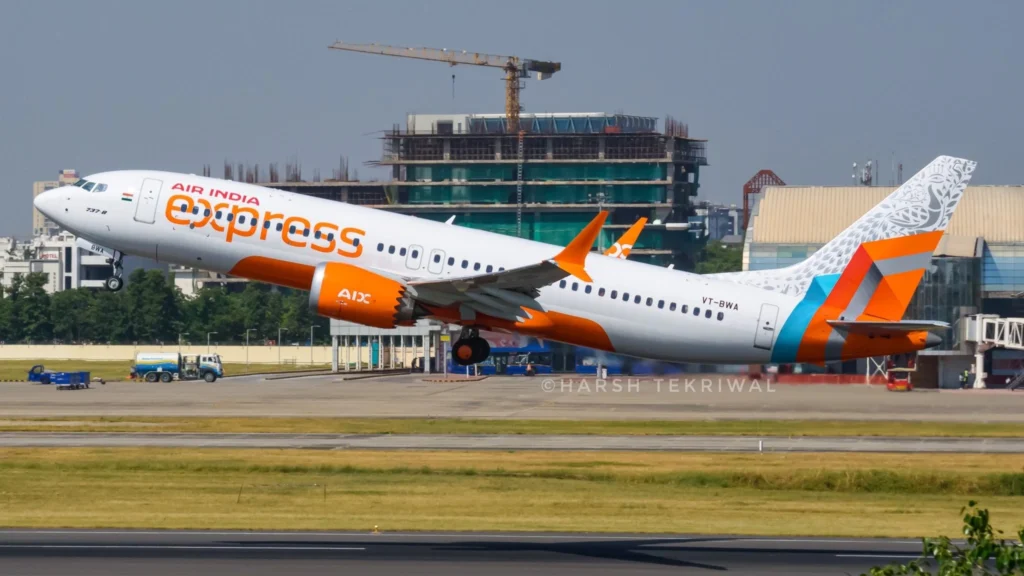GURUGRAM- Tata Group’s airlines, which now have Air India (AI) and Air India Express (IX), have begun optimizing their networks under a strategic model aimed at defining distinct roles for each carrier.
This approach designates Air India, a full-service carrier (FSC), to operate on major hub-to-hub routes, while Air India Express, a low-cost carrier (LCC), will focus on routes connecting tier 2 and tier 3 cities to hub airports, explained AI Express Managing Director Aloke Singh.

Air India Express Strategy
As part of this strategy, Air India operates hub-to-hub routes such as Delhi (DEL)-Dubai (DXB), while Air India Express no longer serves these. Conversely, Air India Express now manages routes like Goa (GOX)-Dubai and Delhi-Sharjah (SHJ), which Air India previously operated.
In the domestic market, Air India Express handles routes like Delhi-Ranchi, while Air India services the high-demand Delhi-Mumbai route.
This approach allows Air India Express to channel passengers to Air India’s long-haul flights from primary Indian airports, reported Indian Express.
While this plan defines distinct routes for each airline, Singh emphasized it is not rigid. Certain routes will have dual coverage by Air India and Air India Express if demand across customer segments justifies both full-service and low-cost options.
Singh identified the primary focus for Air India Express as metro-to-non-metro routes and short-haul international connections, mainly from tier 2 and 3 cities to the Middle East and Southeast Asia. These smaller cities are critical growth drivers for India’s aviation market, he noted.
“Metro to non-metro routes comprise the largest segment of India’s domestic market—about 65 percent—and are the fastest-growing,” Singh stated, highlighting this as the core area for expansion within Tata Group’s airlines.

Proved Global Model
The model aligns with strategies used by major airline groups offering both FSC and LCC services. Such as Singapore Airlines (SQ) deploys full-service flights between Singapore and major Indian cities, while its budget subsidiary, Scoot (TR), links Singapore with smaller Indian airports.
Following its merger with AIX Connect (formerly AirAsia India), Air India Express plans to expand in line with this strategy. Beyond its India-Gulf network, the airline is set to launch new routes to Thailand, with flights from two Indian cities to Bangkok and one to Phuket, with Indian departure cities yet to be finalized.
Further network expansion plans include potential routes to Sri Lanka, Nepal, and Bangladesh within South Asia. In Southeast Asia, Air India Express is exploring markets in Malaysia, Indonesia, Cambodia, and possibly Hong Kong.
Additionally, the airline has future ambitions to enter the Commonwealth of Independent States (CIS) region, including Kazakhstan, Uzbekistan, Azerbaijan, and Georgia—markets where IndiGo has already established a strong presence.
Air India Express, currently operating a fleet of 90 aircraft, anticipates growing its fleet to over 110 by the end of the financial year, however, recent strikes at Boeing’s US facilities have delayed some aircraft deliveries.
The airline plans to operate over 525 daily flights across 55 Indian and international airports by the close of the financial year. Air India Express expects its monthly passenger count to reach approximately 2.4 million by March 2025, a notable increase from the 1.6 million passengers it flew in March 2024.

My Take
I think it’s obvious that both airlines now have clear goals as they no longer have to compete with each other and fly with fewer load factors.
Air India which used to compete with Vistara will now have all the routes and aircraft as well as highly qualified and young staff. So it can take advantage of it.
On the other hand, Air India Express will continue its dominance in connecting the Middle East with the western and southern parts of India. With the help of the AIX Connect fleet and new aircraft, it can open new routes and add more frequency to existing high-demand routes.
Both carriers are on the right track and the only thing they need to work on is the execution as we have seen recently that Air India’s long-haul flights face lots of technical issues with old 777s. Similarly, the AI Express aging 737 fleet has been no different and stays in the news for diversion and emergency landings.
In short, Air India aims to be a global carrier, and Air India Express will be the feeder carrier. Both will run independently yet have synchronized operations. But who will cater to regional traffic? We will let you know in our upcoming article. So stay tuned.
Feature Image by Harsh Tekriwal (@avgeekwithlens) / X
Stay tuned with us. Further, follow us on social media for the latest updates.
Join us on Telegram Group for the Latest Aviation Updates. Subsequently, follow us on Google News

